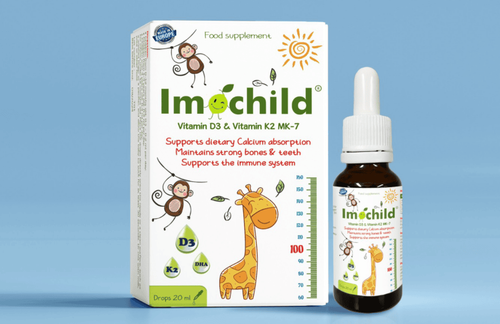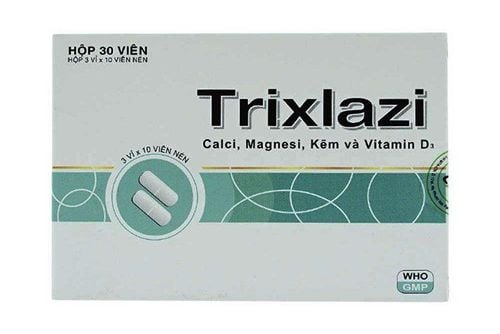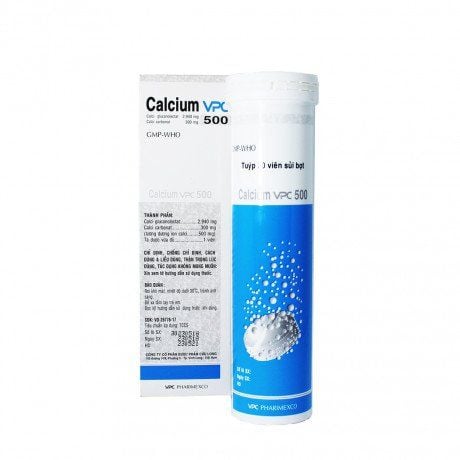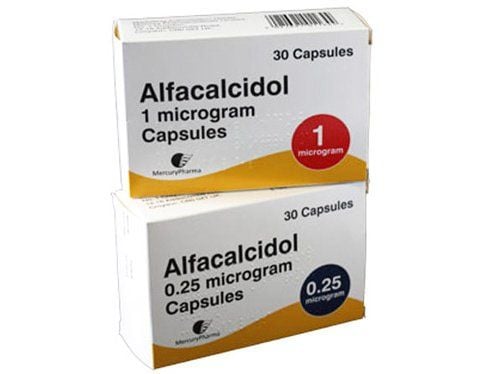This is an automatically translated article.
The article was professionally consulted by MSc Ma Van Tham - Department of Pediatrics - Neonatology, Vinmec Phu Quoc International General Hospital. He was a former lecturer in the Department of Pediatrics, Thai Nguyen University of Medicine and Pharmacy, and a doctor in the Department of Emergency and Neonatal Resuscitation at Thai Nguyen Central Hospital. Dr. Tham has strengths in the field of Internal Medicine: Respiratory, Digestive, Nutrition, Neonatal Emergency.Vitamin D deficiency is the cause of rickets in children and osteoporosis in adults because the organic structure of the bones is not mineralized. Studies show that a low calcium diet increases vitamin D catabolism, which causes rickets in children.
1. Learn about vitamin D
Vitamins are one of the indispensable nutritional components for humans, especially children. The harmonious combination of nutrition and vitamins will help the body develop comprehensively. Vitamin D is a special vitamin because it belongs to the group of fat-soluble substances and can be synthesized by our bodies. In the vitamin D group includes vitamins D2 and D3, of which D3 is better known and has a more important role. Vitamin D is one of the substances that affects the development of the bones of children and regulates the calcium concentration in the blood.2. Causes of vitamin D deficiency in children
Some of the basic causes of vitamin D deficiency in children can be mentioned as:
Due to the mentality of many parents that the child's body is still immature and needs to be protected, so they always keep the baby in In a closed room, children are rarely exposed to the morning sun. For children living in temperate areas, far from the equator, the time of sunlight is less. Babies born prematurely, their bodies are not as healthy as babies born naturally, so the absorption of nutrients is poor. The effects of some drugs that support the treatment of the liver and kidneys interfere with the effect or absorption of vitamin D. Nutritional composition lacks substances that provide vitamin D to the body. Vitamin D is poorly absorbed by the body due to digestive problems and inability to absorb gluten in foods. Due to skin color. Babies with dark skin (black skin) are less able to make vitamin D when exposed to the sun than people with light skin. Children with obesity have a large amount of excess body fat, so vitamin D will be blocked in these fatty tissues and cause vitamin D deficiency.

Trẻ em bị béo phì cũng có thể bị thiếu vitamin D
3. Consequences of vitamin D deficiency in children
Vitamin D deficiency is not only common in children but also adults can get it, and this is the cause of many common diseases that we can list below:
Vitamin D deficiency children or rickets : this is one of the biggest effects of vitamin D deficiency on children. Osteoporosis: common in the elderly, it causes the amount of calcium in the bones to decrease, reduces the elasticity of the bones and easily leads to fractures... Cardiovascular disease: due to vitamin deficiency, patients often have high blood pressure. Pressure and cardiovascular activity affect oral health. Increase cholesterol. Other diseases: Allergies; Inflammation; Depression.
4. Signs to recognize vitamin D deficiency in children
What are the manifestations of vitamin deficiency? And whether it is easy to detect or not are common concerns of parents. Here are some signs of vitamin D deficiency in children:
Vitamin D deficiency is a reason for rickets in young children, so children with rickets are definitely vitamin D deficient. However, not only children with rickets, but many children who are obese are still deficient in vitamin D. Children's bodies are deficient in Vitamin D or sweat, even when it is cold, they still sweat. Children's hair is not healthy, black, but also often loses hair and falls out in the shape of a scarf. This is one of the most recognizable signs in children. Wide fontanelle, bow legs. Children often anorexia, constipation. Slow movement. In more severe cases, the child's chest bone may be deformed. Children are delayed in teething and crawling compared to children of the same age. The child is uncomfortable or upset, cries, sleeps or is startled.
5. Methods to overcome vitamin D deficiency

Thường xuyên cho trẻ tắm nắng là phương pháp tăng cường vitamin D
Methods to overcome vitamin D deficiency in children:
Regularly let children sunbathe, the time to sunbathe is when the sun is just up, about 7-9 hours (that time in sunlight does not have many rays. ultraviolet rays damage the skin), bathing time every day is about 10-15 minutes, this time is long and short depending on summer or winter. When bathing, the baby's hands, feet, arms, abdomen ... should be exposed to direct sunlight. Supplement vitamin D for children through foods including: Cod liver oil; Egg yolk, milk, animal liver; Fish such as salmon, herring, sardines, tuna... Cereal drinks, or orange juice have been fortified with essential nutrients. Dried shitake mushrooms. Maintain a scientific diet, providing a full range of nutrients necessary for the development of children.
6. Note when supplementing Vitamin D for children
The amount of vitamin D found in food only provides about 10% of the amount of vitamin the human body needs, and the actual amount of vitamin D your body receives is very little, so the important role of vitamin D cannot be overlooked. sunbathe in the morning.
When sunbathing, it is necessary to let sunlight come into direct contact with the skin, so don't wear a lot of clothes, don't use sunscreen products and don't sunbathe through the window glass. Any factor, even the smallest, will interfere with the absorption of vitamin D in your body.
Pregnant mothers, in the late stages of pregnancy and about to give birth should supplement with fish oil or foods containing a lot of vitamin D.
7. If the child lacks Vitamin D, what medicine will be given?
When children lack vitamin D, parents can supplement the child's body with vitamin D3 because this is the form the body needs. The necessary vitamin dosage in each subject will be shown specifically as follows:
For babies in the period of 6 weeks - 18 months old, continuous supplement of 800 - 1000 IU/day for healthy babies, about 1500 IU / day for children who are less exposed to the sun, and for children with dark skin, use about 2000 IU / day. When children are 18 months - 5 years old, use the above dosage in conditions of less exposure to the sun. For children with rickets, the supplement dose is quite large, they will need to take 1200 - 5000 IU/day continuously for 4 weeks. Note:
All doses of vitamins used for children must be consulted with specialist doctors, parents are not allowed to provide vitamin D for their children. Because our body can synthesize vitamin D on its own, parents should not abuse it on giving their children vitamin D. Besides, parents also need to supplement their children with essential micro-minerals such as zinc. , Lysine, chromium, selenium, vitamin B1, ... to fully meet the nutritional needs of children. The addition of these essential vitamins also supports digestion, enhances nutrient absorption, improves anorexia, and helps children eat well. Parents can simultaneously apply dietary supplements and functional foods derived from nature for easy absorption. The most important thing is that improving your baby's symptoms often takes a long time. Combining many types of functional foods at the same time or changing many types in a short time can make the baby's digestive system unable to adapt and completely not good. Therefore, parents must be really patient with their children and regularly visit the website vimec.com to update useful baby care information.














